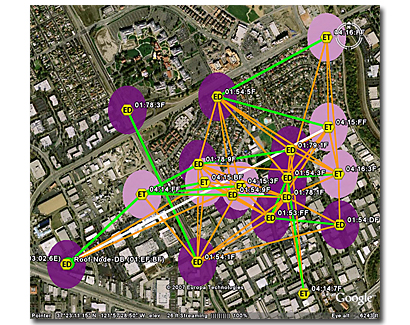|
|
 |
Knowledge Is Key
For Intelligent Decisions
Satellite Logic is a leading,
authoritative source of information in
the Satellite Industry. Located in the
heart of the Silicon Valley, Satellite
Logic provides one of the most
valuable and comprehensive
knowledge bases on the Satellite
market! This is a primary Worldwide
information center which enables our
clients to analyze, evaluate, inquire
and select their best tailored
solutions. Our company sets the
industry standards for targeted
buying leads, reflecting a dramatic
advance over traditional marketing
solutions.
|
|
|
 |

A GPS coordinate can be represented in many different ways. That's
why many times it causes confusion. Books, magazines, and online
sources often display coordinates differently, some using a notation
that includes values represented as pure decimal numbers, others
using a notation that includes minutes and seconds of degrees.
Some use NORTH, SOUTH, EAST, and WEST indicators, while others
use plus and minus symbols instead.
But once the basic terms are clarified, it's not difficult to understand
the different notations. Learning the patterns, using the coordinates
and converting between the different formats becomes pretty easy.
Coordinates are usually displayed in what is probably the most
common format, which includes the hemisphere, the hours of
degrees, and a decimal value representing the minutes of degrees.
Another format is the minutes of degrees which are represented as
a whole number and the seconds which are also represented as a
whole number. A third format can show the GPS coordinates as pure
decimal numbers.
But what are coordinates anyway? As you may recall, the earth is
divided into hemispheres, divided north-from-south by the Equator,
and west-from-east by the Prime Meridian. What's significant about
these imaginary lines on the earth is that GPS coordinates are given
relative to these positions. For example, the latitude N 25° 07.450'
is a little more than 25 degrees north of the Equator. The latitude
S 25° 07.450' is a little more than 25 degrees south of the Equator,
which can also be written as the negative number -25° 07.450'.
The same applies to the Prime Meridian. Values to the West of the
Prime Meridian (such as points in the United States) are represented
with a "W" or a negative number, and values to the East (such as
points in Japan) are represented with an "E" or a positive number.

The hemisphere is sometimes a source of confusion since publishers
frequently omit the hemisphere from printed coordinates. This can
create problems when using these coordinates with some computer
programs since computers always assume a positive number when
you don't enter a sign (+ and -, or E and W). So, suppose you're
diving in the United States and you see the coordinates for the
Christ of the Abyss as: 25 07.450, 080 17.800. You enter these
coordinates directly into your favorite computer program and
suddenly you're somewhere in India! That's because the longitude
was entered as a positive number, which would put it East of the
Prime Meridian. So be sure to include the hemisphere!
What about the numbers? Using the latitude N 25 07.450 as an
example, we can represent this same location as N 25° 07' 27", or
simply 25.124167. They all refer to the same location. This is the
most common source of confusion, so don't ignore the decimal point!
If it's there, then the seconds are represented as a fraction of the
minutes. If it's not there, then the third value is the number of
seconds.
So if you download coordinates directly to your GPS unit manually, be
sure you're using the correct entry format or you may find yourself
way off the target! By the way, Geocoding is the process of
converting street addresses or other locations (ZIP codes, postal
codes, city & state, airport IATA/ICAO codes, etc.) to latitude and
longitude, which can be entered into a GPS device or geographical
software.
Let's take Google for example. What Google is doing for local search,
is targeting search results based on the searcher’s location by
looking at the user’s IP address. They match this up w/ the search
terms. This is good but it could be better. While Google is trying to
determine the users location by the address of the PC, GPS
automatically solves this for mobile. So if Google will use a GPS
coordinate for mobile search, and mobile search will be bigger than
PC search, wouldn’t the technology that matches a GPS coordinate
with a search query be invaluable?
Matching a search query with a GPS coordinate is THE solution for
mobile search. Wouldn’t this be imperative for ANY mobile search?
You won’t have to type in your zip code, street, city to find relevant
searches. The less typing on your cell, the more likely it will be used.
If every PC and laptop had a GPS chip in it, local search would be
complete.
|
|
|
|
